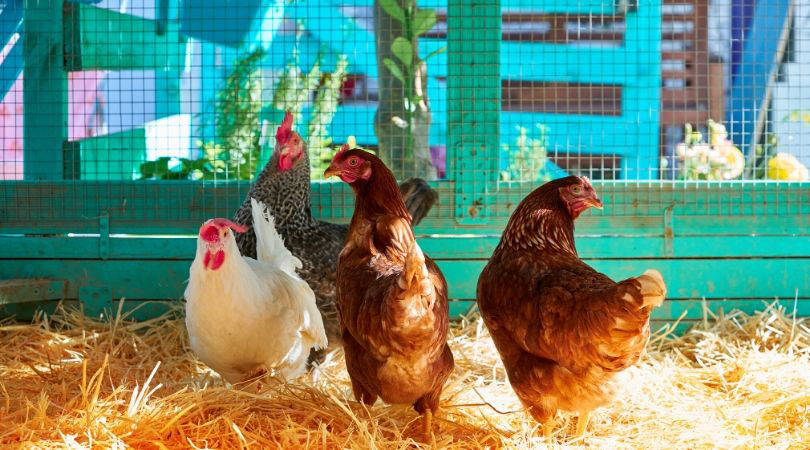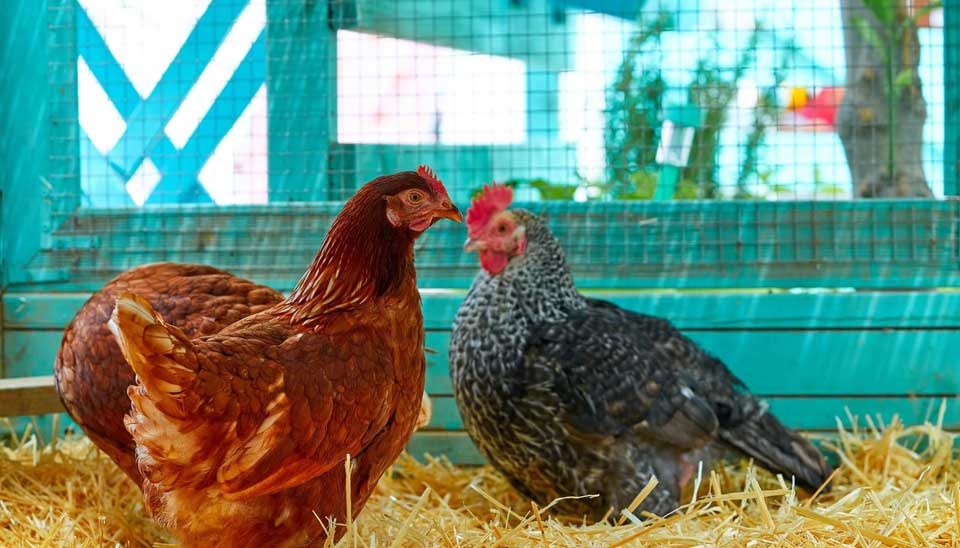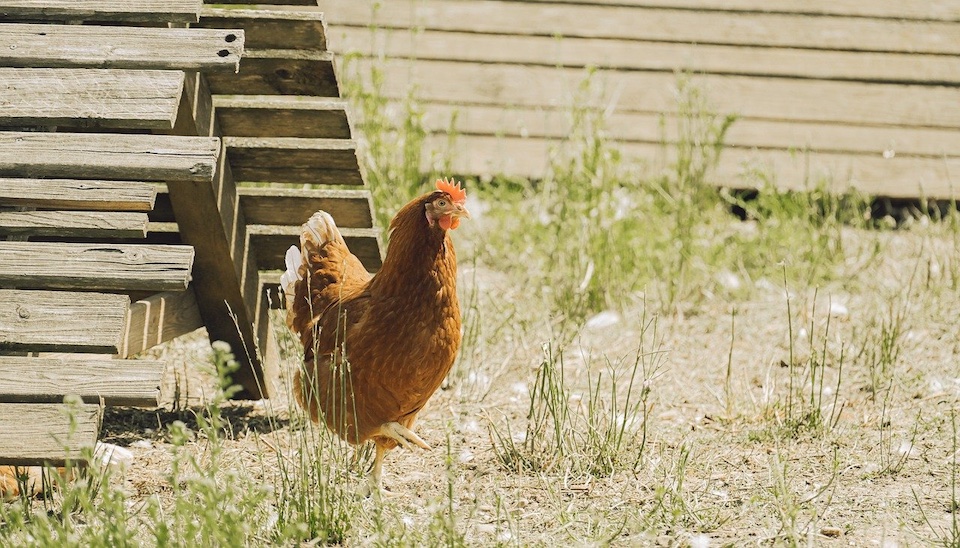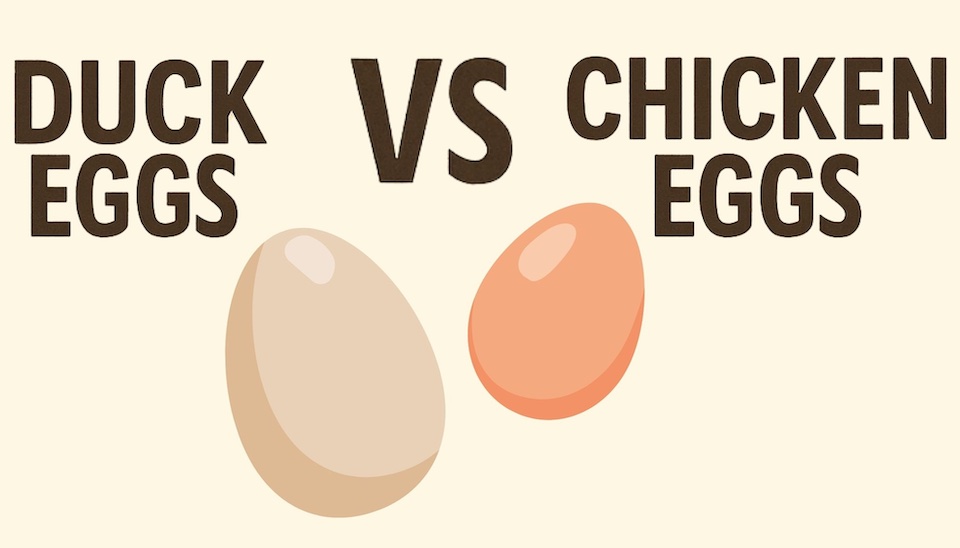Worms, Mites and Lice in Chickens
Complete chicken parasite guide
Backyard chicken keepers should be aware of the symptoms of worms, mites and lice in chooks and apply the treatment as soon as possible to reduce the stress and physical damage they can do.
These are also known as chicken parasites and are divided into two categories, internal and external. Internal parasites such as worms and coccidia are spread through excrement in the feed and water supply. This type of parasite can drain your hens of needful vitamins and minerals, leading to a variety of deficiencies and digestive problems. External parasites include mites, lice and fleas. Mites will feed on the chicken's blood, whereas lice will feed on skin follicles.
Prevention of Worms, Mites and Lice in Poultry
You will quickly learn that prevention of parasites is not only an easier road than treatment, but you will also be rewarded with happier hens! For external parasites such as lice and mites, it is essential for you to keep a clean chicken coop and hen house. Regular treatment for lice and mites is recommended in some environments.
To prevent external parasites such as mites and lice, it is also important to not only encourage your backyard chickens to have a dust bath but to make it a great one. We explain in this article "What is a Chicken Dust Bath" the hows and why of dust bathing - including what you can add to give your hens a layer of protection from mites and lice.
To naturally prevent internal parasites such as roundworms and gapeworms, try to ensure that your birds cannot leave their droppings in their feed or water. You can do this by choosing a feeder and drinker that they cannot stand or scratch in. Other natural preventative measures include ensuring a clean hen house with dry bedding and keeping a relatively stress free environment. Adding Apple Cider Vinegar to drinking water, and preventing contact with wild birds and rodents will also help.

External Chicken Parasites - Mites and Lice
These parasites live outside of chickens. Some of them live on the birds themselves, while others live in the coop or environment. Most chicken external parasites cause irritation and ill health in your birds by feeding on their blood.
Northern Fowl Mite
The Northern fowl mite is a poultry parasite that lives on chickens. This mite is tiny in size and not easy to spot at first sight. At its largest, its body is 1mm in length. They are found on a chicken's feathers and body, feeding on their blood, potentially up to 6% of a chicken's blood total. Mites are easily transferred from hen to hen and can be introduced to the coop by rodents, wildlife and birds.
Northern fowl mites typically infest the vent area. They can feed at any time of day. Be aware of the symptoms and provide the necessary treatment for this parasite.
Signs & Symptoms:
- Typically, poultry with an infestation will have black debris, a build up of mites and their excitement, clumped around their vent area
- Chickens may display irritation, itching or pain at the affected site
- Decreased egg production
- Weight loss and poor appetite
- Anaemia (iron deficiency), often recognisable by a pale comb
Treatment:
It is equally important to not only treat the northern fowl mites and also put in preventative measures.
We recommend treating infected birds with a commercial mite treatment. To use, follow the instructions, avoiding the beak and eyes. It is also important to treat the coop and nesting boxes. Treat all chickens in the flock, even if only a few appear to have mites. Re-treat again after 2 weeks.
Chicken Red Mite
The chicken red mite, also simply called chicken mites, is the most common chicken mite in Australia. As these mites measure as little as 0.6mm-1mm, they can be difficult to eradicate. In fact, it may even take a while to recognise an infestation.
Although you can find red mites on your chickens in the case of a severe infestation, these mites don't actually live on the bird. Instead, red mites live in the cracks and crevices of a chicken coop. At night time, they will come out of their hiding places to feast on your backyard chickens' blood.
This creates a traumatic environment for your chickens. You may see their health deteriorate with an increased risk of anaemia and odd behaviours as red mites terrorise your hens at night.
Signs & Symptoms:
- Reduction in weight gain in young birds
- Reduced egg production
- Pale comb due to anaemia
- Chickens are avoiding roosting in the coop at night
- Chickens are not laying in the nesting boxes
- Restlessness in the flock at night
- When checking the coop, you may notice clumps of red mites or of their excrement.
- Check your hen house after dark with a torch, keeping an eye out for tiny mites crawling along beams and walls
The best way to identify a red mite infestation is to check the chicken coop for mites after dark. Take a torch and look for tiny red mites on the walls, beams and roosts. Or on your chickens!
If you find red mites on your chickens in the day time, you have a severe infestation that needs immediate treatment.
How to Control Red Mites
The most effective treatment for chicken red mites is a two-pronged approach: treating the chickens and the coop. It may take a few treatments to see total eradication.
Ideally, treat your chickens at night time when the mites will be on the feathers. Or treat your chickens just before they go in to roost. Mite treatments are available here.
The next day, lock your chickens outdoors and treat the coop. This means cleaning out all bedding and droppings. You must also treat crevices, cracks and nesting boxes with the mite treatment, as this is where the mites will be hiding. If you are using a mite spray, you can also spray walls, roosts and other surfaces.
Re-treatment is recommended 2 weeks after the initial treatment. After the second treatment, judge if another re-treatment is required by checking the coop at night for signs of mites.
Regular preventative treatment is recommended for chicken keepers in warmer climates where mites are more active.
Scaly Leg Mites
Scaly leg mites are a chicken parasite that lives beneath the scales of the feet and legs. These tiny mites cause a lot of discomfort to chickens as they eat the tissue under their skin, depositing crud in its place. The result is a lumpy, crusty appearance on the feet and lower legs. Lesions will often be infected and irritated.
If left untreated, these mites can cause lameness, loss of toes and infections that may result in death.
It's important to note that scaly leg mites can also affect wild birds, which may bring the mite into the chicken run.
Signs & Symptoms:
- Crusty looking skin on feet and lower legs - may appear lumpy
- Thickened legs
Treatment
While it can be reasonably straightforward to rid your chicken of scaly leg mites, the effects and deformities that they cause on their feet and legs are lasting. Therefore you must apply treatment and re-treatment as soon as possible.
To treat scaly leg mites naturally, we recommend using VetRx solution. The procedure is easy. Simply soak the chicken's feet in a warm bath of water for 5-10 minutes, then softy rub the skin with a gentle toothbrush to remove any excess scales. When you have finished, dry the feet and generously apply VetRx remedy solution onto the feet, legs and comb if affected. Repeat this process every three days.
Remember to treat the hen house and coop using insecticide.
Read more: How to treat scaly leg mites naturally
Lice: Shaft Louse
Lice are a nuisance problem for backyard chickens. Shaft lice are an ectoparasite that live and breed on your hens, causing irritation and inflammation, resulting in significant discomfort.
Measuring between 1mm - 6mm in size, lice are relatively easy to spot if you are looking for them. You will notice they move quickly in and around the feather shafts. These parasites live on chickens and don't survive long in the environment.
Signs and Symptoms:
- Lice eggs will be found in whitish clusters at the base of a feather; sometimes these will be easier to spot around the vent area
- Reduced egg production
- Scratching against posts or fencing
- Preening more than usual
Treatment of lice
Just like in humans, poultry lice can be difficult to treat - often taking many rounds of treatment for success. This is due to their egg cycle, which can be resistant to treatment.
To rid your chickens of lice, you should use a poultry dust such as David Grays Poultry Dust. Spread the dust in between the feathers, ensuring you get the dust to the skin and shaft of their feather. As the lice hatch, you will need to do another round of treatment.
Internal Chicken Parasites
These parasites live inside a chicken. Although worms are the most common internal parasite that causes health problems in chickens, coccidia are also ubiquitous and can cause severe illness or death in certain circumstances. Most internal parasites live in the gut of the chicken, but there are also worms that infect the eye and throat.
Internal parasites generally live the adult stage of their life inside chickens. Chickens get worms from consuming worm eggs, which are found in the soil and in the faeces of infected birds. Some types of worms live part of their life inside an insect, such as a slug or earthworm, and infect chickens when they consume the insect.
Worms are most likely to effect free range chickens that consume a lot of insects and chickens that have contact with wild birds.
With intestinal worms, chickens can handle a small worm load without any ill-effects. However, severe worm infestations or worms combined with another illness or source of stress can make chickens very ill or even kill them. For this reason, even if your chickens do not have any symptoms of worms, it is recommended that you use a dewormer, like Kilverm Poultry Wormer as a regular preventative.
Roundworms
Roundworms (Ascaridia spp.) are a fairly common parasite found in chickens and birds. Subspecies of roundworms include large roundworms and small roundworms. Large roundworms are particularly harmful to backyard chickens, causing intestinal blockages, malnutrition and even death.
Symptoms:
- Weight loss
- Eating more often or increased appetite
- Worms in chicken poo. If you look closely, you may see teeny tiny white strands in the chicken poo
- Pale yolk colour
- Decreased egg production
- Very rarely, a small hair-like worm can be seen in an egg - this is very rare, and not dangerous
Treatment:
To treat internal parasitic roundworms in chickens, we recommend Kilverm Poultry Wormer. This treatment is suitable for use in laying hens and there is no withholding period for eggs.
Tapeworm
Tapeworms are another common chicken parasite. In healthy, unstressed birds, tapeworms are unlikely to cause any symptoms or ill-health.
Treatment
Few of the most common worm treatments for chickens kill tapeworm. If your chickens have worms and a normal dewormer has not solved the problem, it may be tapeworms. See your vet for a faecal test and specialised worm medication.
Threadworm
Threadworms are also called hair worms. There are many different threadworms, or Capillaria species. Some live in the intestine, while others are further up the digestive tract.
Symptoms:
- Weight loss
- Pale combs
- Droopiness
- Decreased egg production
- Very rarely, death
Treatment
Treat threadworms in chickens with Kilverm Poultry Wormer.
Cecal Worms
Chicken cecal worms are, as the name suggests, found in the ceca, which is a part of the digestive system joining onto the intestine. Cecal worms aren't generally a problem in themselves, but they can carry the blackhead parasite, Histomonaisis, which is fatal to turkeys.
Treatment
Kilverm Poultry Wormer treats cecal worms.
Gapeworm
Chicken gapeworms are thin, red worms that reside in the chicken's trachea or throat. This is particularly harmful as an infestation can quickly move to the lungs and obstruct breathing or stop the chicken from eating. We discuss gapeworm at length in our article Respiratory Infection or Gapeworm?
Signs and Symptoms
- Chicken is gasping for air
- It looks like your hen is yawning
- Shaking their head, trying to dislodge the worms
Treatment of Gapeworms
If one bird is showing signs of gapeworm it is important to treat your whole chicken flock. Not all dewormers treat gapeworm, so read the bottle carefully and always follow the instructions.
Protozoa - Coccidia
Coccidia are a form of protozoan parasite. Coccidia live and breed in the chicken's digestive tract, causing tissue damage and reducing the ability to absorb nutrients. Coccidiosis is the inflammation caused by coccidia. While all chickens carry coccidia, new strains can cause illness. Coccidiosis is also particularly severe, and often fatal, in young chickens and birds that are stressed or otherwise unwell.
We discuss coccidiosis in depth in our article: Microscopic Parasites called Coccidia causes coccidiosis in chickens.
Signs & Symptoms
If you see any of the following symptoms in your backyard chickens, you need to act fast.
- Bloody or watery stools
- Lack of appetite
- Droopy posture and lethargy
- Reduced egg production
- Pale combs and wattles
- Death
Treatment of coccidiosis
The majority of chickens that come into contact with coccidia will have developed an immunity to this parasite. However, if you see the above digestive symptoms, it is important to seek early treatment so that your chickens should have a good prognosis.
Treatment involves quarantining the bird from the rest of the flock and administering Amprolium through the drinking water. We recommend using a medication drinker. This will allow you to observe how much water is being consumed and to control the amount of medication applied.
In Summary
Above we have discussed the most common chicken parasites. By having a firm health baseline for your chicken flock, you will be able to quickly determine if they are unwell, and treat early if necessary. Next time you are feeding your chooks, take note of their overall vitality, the colour of their combs, how much feed they are consuming and how their stool looks.



